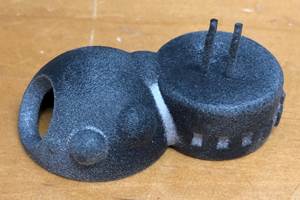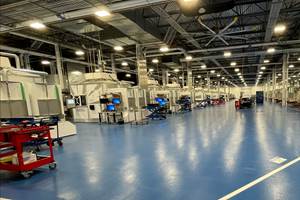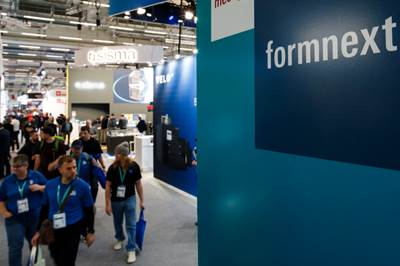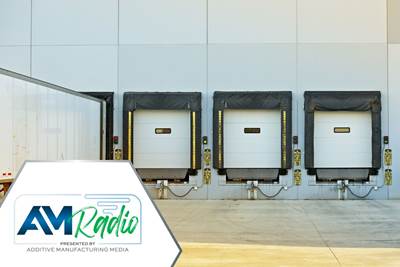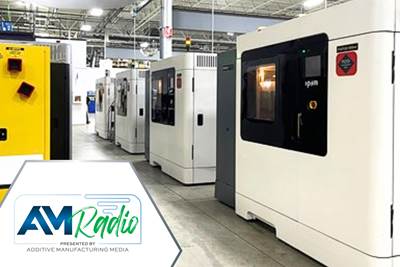Additive manufacturing provides the means for toolingless manufacturing. And that is quite a lot. This transformation is too liberating, this promise too powerful, for additive not to be widely embraced within the many industrial sectors where it can play a vital role. AM’s promises are more than this, but the way ahead for additive, and why its use will continue to expand, is ultimately this simple.
That way is also long. The full realization of additive’s promise will come soon for some applications and will be long in coming for others. AM for production must continue to improve in speed, repeatability and cost per part to open further opportunities beyond the ones it serves today. This is happening; technology and process improvements bring gains in these measures. We are seeing this and have been seeing it — AM keeps getting better by all these numbers.
Yet here is what is harder to see: the extent of the change this continued advance will bring. All of us are so touched by tooling that we are not aware of it, not fully. We are so accustomed to a world of mass-produced objects whose form, quantities, supply and possibilities are determined by tooling that we do not see the extent to which tools shape our world. By getting free of tooling in more cases — and along the way, by making the tooling itself easier to produce — AM will make the manufactured world freer in ways we have hardly begun to consider. Customization, resource efficiency, shedding of inventory and rapid innovation are the start. How much more happens when benefits such as these begin to interweave and amplify one another? I do not know. I don’t think anyone does.
Still, there is also the moment today. At Formnext (see our review of the most recent Formnext expo), various conversations with leaders of firms advancing AM technology highlighted the challenges of this time. Signals are mixed, to be sure. Higher interest rates and the effect on investment are draining to some of these firms, while others race ahead. An illustration came out in a conversation with a leader of an AM materials company. The company is weighing investing to increase capacity, but when? It sees no slowdown in current or forecasted revenues, but does see growing uncertainty around the latter figure, uncertainty expanding in both directions. This person described to me how a customer forecasting quantity X of material for the year might discover it needs three or more times that amount because of unforeseen demand, while another forecasting X might come to need barely a third. Thus, it is not that the signs are favorable or discouraging, it is that they are potentially either one, or a net that sums to neither.
Meanwhile, nothing in this suggests a change to AM’s trajectory long-term. There will always be manufacturing investment, and at any new step for a manufacturer, the chance to commit to a way with less tooling offers a provocative choice.
Minds are ultimately the meaningful factor here. For AM to take root, either someone’s mind has to change away from an established process, or someone new has to take up manufacturing and begin with additive from scratch. There is no other way. Each step ahead for AM thus involves technology, opportunity — and psychology. The third of these is perhaps hardest to predict. Even so, the constraints of a current process versus the promise of a new one create a tension that can build for only so long before crossing a critical line in the thinking of a stakeholder or CEO. This is how additive will keep moving: in the minds of industrial leaders, in the changing of minds that are unlikely to change back.
I come back again to those numbers: speed, repeatability, cost per part. They continue improving. Each advance opens wider the window of possibility. And each advance proving it can succeed permits more minds to change.
AM brings toolingless manufacturing. The promise is too powerful not to prevail. When signs are mixed, when the view is hazy, this is the way to see: by stepping back to recognize the steady, simple lines that will define the way ahead.
Related Content
6 Considerations When Launching an Additive Startup
Recent additive manufacturing (AM) startup owner, JP Kinerk, shares his experience by offering helpful advice for others just starting out in the additive realm.
Read MoreWhy AM Leads to Internal Production for Collins Aerospace (Includes Video)
A new Charlotte-area center will provide additive manufacturing expertise and production capacity for Collins business units based across the country, allowing the company to guard proprietary design and process details that are often part of AM.
Read MoreThe Arrival of the AM Factory: How Proprietary Processes Deliver Production 3D Printing
Various recent articles report on companies using internally developed technology to equip factories and deliver on the promise of AM for production.
Read MoreAdditive Manufacturing Is Subtractive, Too: How CNC Machining Integrates With AM (Includes Video)
For Keselowski Advanced Manufacturing, succeeding with laser powder bed fusion as a production process means developing a machine shop that is responsive to, and moves at the pacing of, metal 3D printing.
Read MoreRead Next
What We Found at Formnext 2023
New metal processes, new possibilities for existing processes, the next step for copper and more. Here is a summary drawing on all our reporting from November’s event.
Read More3D Printing for Supply Chain Resiliency: AM Radio #39
Additive manufacturing can speed, strengthen and simplify industrial supply chains. How close are we to realizing this promise? Dr. Tim Simpson and Peter Zelinski discuss lead time, logistics and other factors on AM Radio.
Read MoreHow Acquisition and Investment Activity Affects AM Users and Adopters: AM Radio #40
Stephanie Hendrixson and Peter Zelinski discuss how the corporate and financial developments in additive manufacturing play out for current and prospective users of AM technology, and where this activity is likely to lead.
Read More














